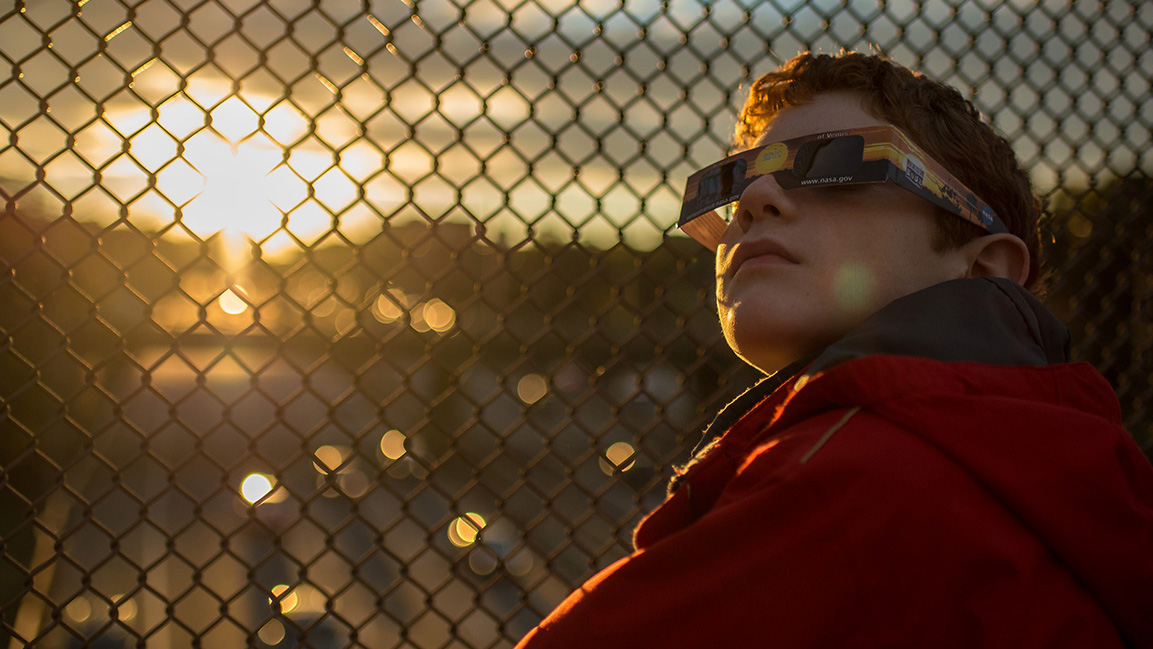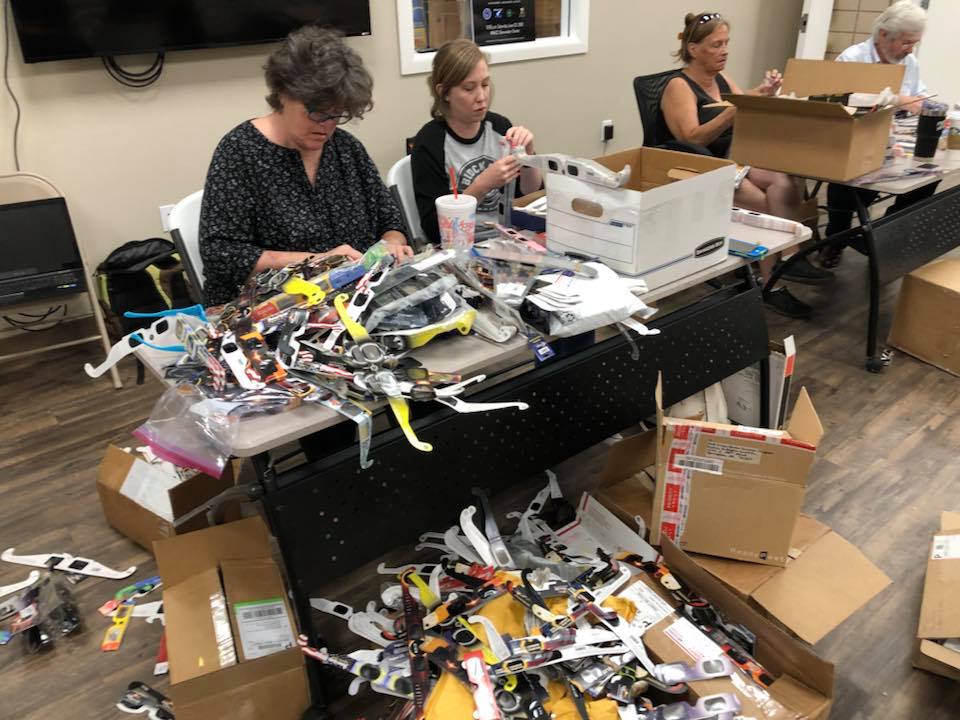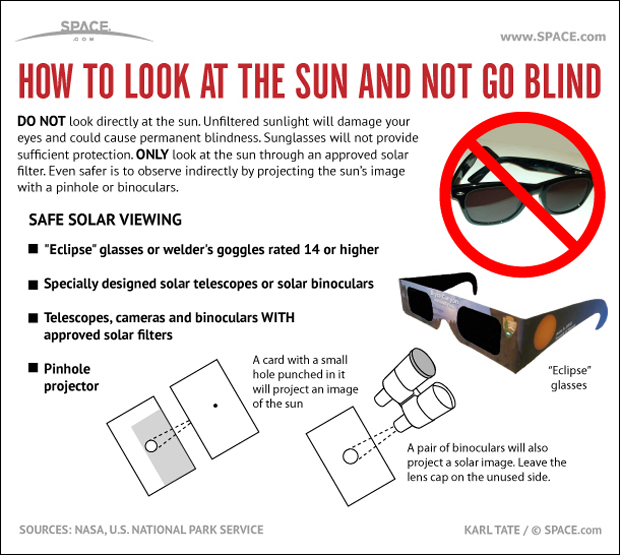Astronomers Without Borders Giving Away Free Eclipse Glasses
Protect your eyes during the total solar eclipse on July 2.

For the total solar eclipse on July 2, the nonprofit group Astronomers Without Borders is handing out free, recycled eclipse glasses to provide skywatchers a safe way to watch the moon cross in front of the sun.
After the Great American Eclipse on Aug. 21, 2017, the organization began collecting "gently used" solar eclipse glasses from skywatchers across the United States to distribute them to schools, libraries, museums and other institutions in the path of the July 2 eclipse.
As a result of that campaign, Astronomers Without Borders received about 5 million pairs of safe-to-reuse eclipse glasses. More than 40,000 of them have been sent to Chile and Argentina, which are in the path of totality, as well as Peru, where skywatchers can see a partial solar eclipse.
Related: Is It Safe to Reuse Your Solar Eclipse Glasses?

The remaining pairs of solar eclipse glasses will be distributed across Asia for the annular solar eclipse coming up there on Dec. 26, 2019. Astronomers Without Borders also plans to distribute more eclipse glasses in South America for the annular eclipse that will occur here on Dec. 14, 2020.
Although eclipse glasses are relatively cheap, they can be difficult to come by if you don't buy them well in advance — and fraudulent eclipse glasses often appear on the market. To make sure that these used eclipse glasses are safe, Astronomers Without Borders verified that the donated glasses were ISO-certified and free of any scratches, holes or other damage.

If you're planning on viewing the solar eclipse from Chile, Argentine or Peru and still need to find some eclipse glasses, here's where all those donated pairs ended up:
Get the Space.com Newsletter
Breaking space news, the latest updates on rocket launches, skywatching events and more!
- 30,000 pairs of eclipse glasses were sent to the Instituto Geofisico del Peru for distribution at 14 universities and planetariums in and around Lima, Peru.
- 2,500 glasses have gone to the Colca Planetarium in Arequipa, Peru.
- 8,000 were sent to Argentina and distributed along the path of the eclipse.
- 2,500 glasses reached the U.S. embassy in Chile and will be distributed at local schools.
Remember that awesome #eclipse glasses recycling campaign back during 2017 #GreatAmericanEclipse?Astronomers w/o Borders is now giving a #secondchance to 40,000 solar glasses & sending them to #SouthAmerica for July 2 #solareclipse https://t.co/yyQFekNrKc#OnePeopleOneSky pic.twitter.com/i6qlI5VqxjJune 28, 2019
When you're finished using your eclipse glasses on July 2, or if you have some extra pairs lying around, consider donating them to Astronomers Without Borders to help other eclipse-watchers keep their eyes safe during future solar eclipses.
You can find out more about the campaign and how to find or donate used eclipse glasses at astronomerswithoutborders.org.
Editor's Note: If you snap an amazing picture of the July 2, 2019 total solar eclipse and would like to share it with Space.com's readers, send your photos, comments, and your name and location to spacephotos@space.com.
- How to Safely Observe the Sun (Infographic)
- What to Do with Your Eclipse Glasses
- Astronomers Without Borders Focuses on Bringing Eclipse Science to All
Email Hanneke Weitering at hweitering@space.com or follow her @hannekescience. Follow us on Twitter @Spacedotcom and on Facebook.
Join our Space Forums to keep talking space on the latest missions, night sky and more! And if you have a news tip, correction or comment, let us know at: community@space.com.

Hanneke Weitering is a multimedia journalist in the Pacific Northwest reporting on the future of aviation at FutureFlight.aero and Aviation International News and was previously the Editor for Spaceflight and Astronomy news here at Space.com. As an editor with over 10 years of experience in science journalism she has previously written for Scholastic Classroom Magazines, MedPage Today and The Joint Institute for Computational Sciences at Oak Ridge National Laboratory. After studying physics at the University of Tennessee in her hometown of Knoxville, she earned her graduate degree in Science, Health and Environmental Reporting (SHERP) from New York University. Hanneke joined the Space.com team in 2016 as a staff writer and producer, covering topics including spaceflight and astronomy. She currently lives in Seattle, home of the Space Needle, with her cat and two snakes. In her spare time, Hanneke enjoys exploring the Rocky Mountains, basking in nature and looking for dark skies to gaze at the cosmos.









